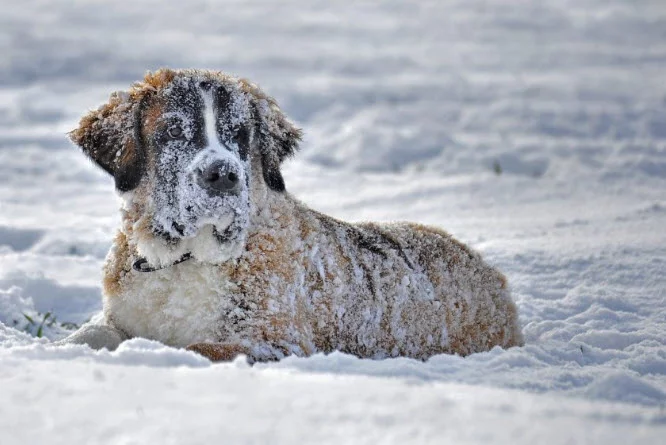
As temperature drops, it is important to remember that dogs can get frostbite just like people can. Some dogs are more susceptible to frostbite than others, but in the right circumstances, it can happen to anyone. Here is what you need to know.
If your dog has been spending time in the cold, and you notice frostbite, get your dog warm but do not apply heat to the area and instead call your vet for an emergency appointment.
A dog’s cold weather endurance depends on many factors, including:
For example, shorter dogs are much more vulnerable to the cold due to their proximity to the ground. Likewise, although a dog’s coat provides warmth and insulation it doesn’t prevent frostbite or hypothermia. To help protect your dog, use an insulated sweater or jacket that covers their neck and belly with “head to tail” coverage – making sure it doesn’t constrict movement.
Paws, as with other extremities of a dog’s body, are susceptible to frostbite if subjected to sustained frigid weather. Make sure your dog is using dog boots for extended walks.
When the temperature drops below freezing (32°F), blood vessels close to the skin will constrict in order to preserve core body temperature and divert blood away from the extremities towards the heart and vital organs. Long periods of exposure can cause a critical reduction of blood flow to extremities, i.e., paws, nose, ears, tail, and can cause the tissues to freeze, resulting in severe tissue injury. Additionally, dogs who suffer from heart disease, diabetes or other ailments that cause reduced blood flow are more vulnerable in colder weather and at increased risk of frostbite.
Copyright © 2020 USA Service Dog. All rights reserved.
Love your articles